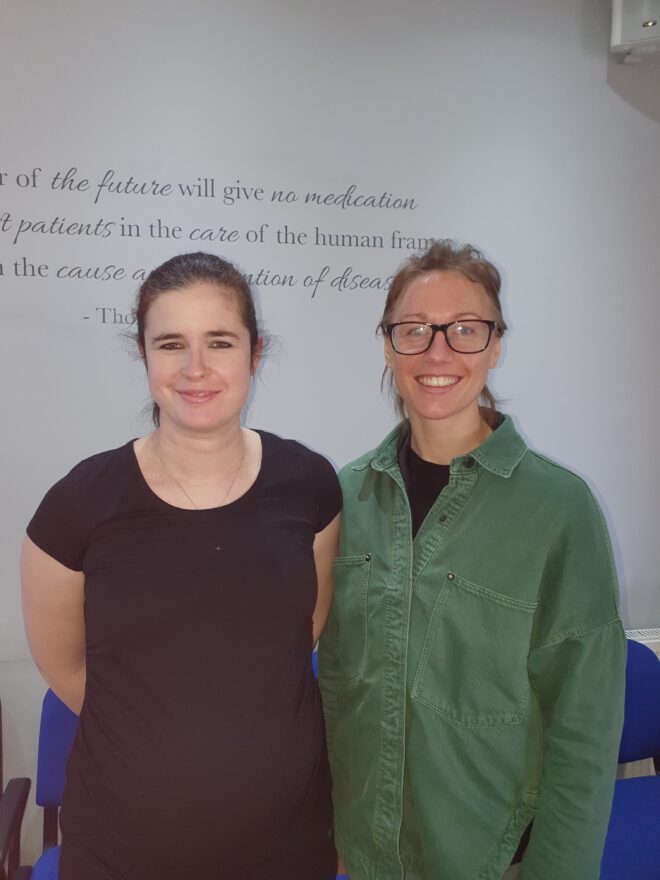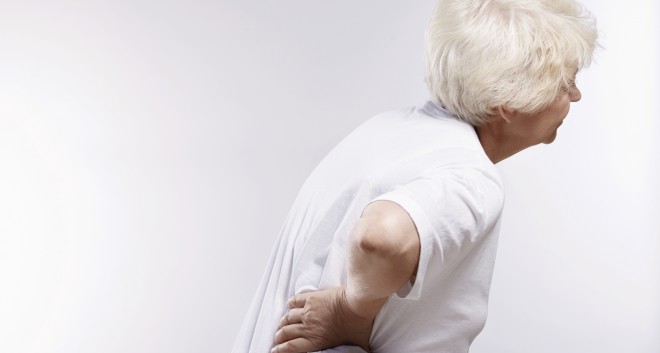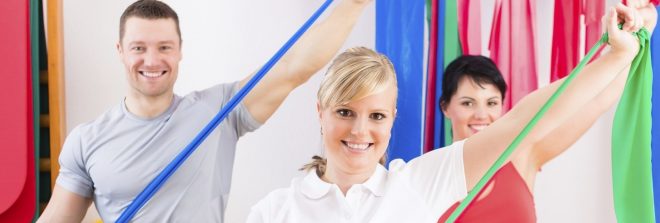
Clinic News
Wishing all our Chinese patients and their families a happy new year for 1st February. 2022 is the Year of the Tiger. If you were born in any of these years: 2022, 2010, 1998, 1986, 1974, 1962. You like your independence and always try to do things yourself before asking for help.
We have the pleasure of Sianne joining Ruth and the team from 21st March 2022 to cover for Jenny while she is away on Maternity leave - she will be with us until the end of the year.
Find out a little more about her below. Her diary is now open and you can book online with her in the usual way or just give reception a call.
This month we will be looking at the worrying fact that arthritis can affect the younger population, remind you about technology use, how pelvic dysfunction can be avoided and how to improve your mood by improving your posture.
"Hello All,
My name is Sianne and I would like to introduce myself as the new sports massage therapist covering Jenny's Monday clinic.
I am a mum to two beautiful 13 month twin daughters and when I am not at work they keep me very busy.
My job roles have always been focused around improving a patient’s quality of life whether this be through treatment, exercise prescription or supporting positive behaviour changes.
I have worked as a therapist for the past 12 years, working predominately with patients with occupational and MSK issues. I take a holistic approach to health & wellbeing and helping improve clients movement and aiding their pain management is a job I find extremely rewarding. I enjoy chatting and getting to know my patients so expect a conversation filled appointment. I utilise my knowledge and skills as a qualified personal trainer and Nutritionist (BSc) to help my patients.
Sport and exercise has always been a big part of my life and I was fortunate enough to represent at high level, therefore, I appreciate the importance to patients whether exercising just for leisure or to a high level of keeping their bodies injury free.
I really look forward to meeting you all.
Sianne "
As promised an update on our 30th year anniversary project - it is likely we will be working closely with Broxtowe Borough Council to tie in with the Council's Climate Change Strategy and Green Futures Programme. Alex will be liaising with their representative in the next few weeks to see how our vision can work.
Matt has put together some great mini videos on the TV screen in reception - why not take time to have a look at them instead of your phone while waiting - so much better for your neck!
We still have a mandatory face mask policy in the clinic, unless you are medically exempt, so please bring your face masks, wear them correctly and be mindful of other clinic users.
Finally, let's wish you a happy valentine day on 14th February - we hope you are able to spend some time with loved ones but also don't forget to love your spine - remember all the helpful tips and advice your chiropractor has given you. if we haven't seen you for a while maybe it's time to let us welcome you back to the clinic and give you that all-important check-up and realignment.
Look out next month for more information on fall prevention and improving your balance - we've seen so many patients this last month who have had falls - please take care especially on wet and icy pavements.

Arthritis Also Attacks Adolescents
Arthritis has always been perceived as a problem only for older people, but some 30% of the 8 million sufferers in the UK are under the age of 25.
Making sure that your diet contains certain food groups can be a powerful natural weapon in the continuing battle for pain relief. Arthritis doesn’t have to be a life sentence. The following lifestyle and dietary table is for guidance only and arthritis sufferers willing to change their diet should do so very gradually, after discussion with their GP, and ensure that all food groups are adequately replaced.
TRY TO AVOID
- Nightshade foods – e.g tomatoes, peppers, eggplant, white potato and margarine
- Dairy products including chocolate
- Dry roasted nuts
- Alcohol (wine), soft drinks and caffeine
- Additives, preservatives and chemicals
- Sedentary lifestyle
- Sulphur and methionine containing foods – eg cabbage, brussel sprouts, garlic and onions
REPLACE WITH
- Moderate amount of meat
- Oily fish such as salmon, mackerel, sardines and tuna for Omega 3
- fruits and vegetables, e.g lettuce, peas, cabbage, apples
- Complex carbohydrates, e.g brown rice, wholegrain pasta and wholegrain bread
- Vinegar and hot spices
- Dietary fibre
- Nuts such as almonds, brazil nuts and hazelnuts
- Water – try to drink a minimum of eight glasses a day
Plus gentle daily exercises, stretches and walks.

The 21st century ailment: ‘Text Neck’
It is estimated that around 94% of adults in Europe & the US own a mobile phone. This means that 94% of the population are at risk of ‘text neck’. Text neck can occur just by tilting the head downwards by 2-3cm to look at your phone screen. It has also been found that when tilting your head forward by this amount, the effective weight of your head increases to 30kg – equivalent to the weight of an average eight year old child!
Text neck can result in severe upper back strain, shoulder pain and tightness in both shoulders. It can also possibly cause permanent damage in young, growing children, which may in turn lead to life long neck pain.
Follow these helpful tips to reduce your risk of ‘text neck’:
- try to hold your phone as close to eye level as possible. The same goes for people working in an office who need to use a computer for the majority of the day – ensure that your screen is completely in line with your eyes, to ensure you are not straining your neck to look at the screen.
- If you work in an office, be sure to take a quick stretch break every half an hour or so, to ensure that your back and neck won’t stiffen.
- Try these simple exercises to relieve pain stemming from text neck, the downward-facing dog is a common exercise to relieve shoulder and upper back pain, however the ‘exaggerated nod’ might be more effective. Simply look up to the ceiling, let your jaw relax and open your mouth, keep your head here and bring your lower jaw to your upper jaw.
Be sure to visit local chiropractor if you are experiencing any ‘text neck’ symptoms because if left untreated, it can potentially lead to inflammation of the neck ligaments and increased curvature of the spine.

Pelvic dysfunction is not life threatening – but it can be life limiting!
Many patients who suffer from knee, back or shoulder pain for example can attribute these issues to a pelvic dysfunction. While pelvic dysfunction is not life threatening it can be life limiting so find out how you can make small changes that may make a large difference. If you’re suffering from regular pain and think you might have a misaligned pelvis, it’s important for patients to visit a chiropractor.
Pelvic dysfunction often happen as a result of everyday awkward movements over time such as lifting heavy loads without care and sitting at a desk with bad posture as well as during pregnancy and childbirth or from injury.
The pelvis acts as a transmitter of forces between the legs and the spine. Many important muscle groups attach to the pelvis, the thigh muscles from below and the muscles of the trunk from above. If the pelvic joints (sacroiliac joints and pubic symphysis) are not moving correctly this can cause an imbalance resulting in pain in many different places. It could be looked at as a core stabilizer, supporting the spine, legs and wide range of muscles, so when the pelvis is not working properly (hip is tilted out of position) it can cause pain, weakness and tightness that can travel through the hip and pelvis up into the shoulders and neck, it also commonly can cause referred pain down into the legs.
There are three distinct areas that may be affected as a result of Pelvic Dysfunction these include the hips, which can become achy, painful and inflamed, the lower back which due to impairment of stability and function of (hyperextension) of the muscles in the abdomen and lower back which can cause spinal joint (facet joint) injuries and finally, the knee and ankle which can be put under a lot of strain if weight is shifted to one side to compensate for the pelvic dysfunction.
You can do a simple test at home to help you look for obvious signs of pelvic dysfunction: stand barefoot in front of a mirror with your back straight but relaxed. Imagine a vertical line going straight down the middle of your body and a second line near your shoulders that is perfectly perpendicular to the first line. If your hips are out of alignment, your pelvis will appear diagonal rather than parallel to the second line meaning you have a lateral pelvic tilt. This could be a sign of pelvic dysfunction.

Is Slouching Affecting Your Mood?
We know that facial muscles affect facial expression, and in turn can influence emotion, but it’s rarely considered that other muscular states can also affect mood. Research suggests that this is the case and that sitting upright can build resilience to stress.
Especially when under pressure and distracted, people are likely to pay less attention to their posture. However, research indicates that good posture at times of stress can help to maintain self-esteem and positive mood, whereas slumped postures have the opposite effect.
It is important to take care of your posture and there are a number of ways to do this, both at home and at work, and especially when using a computer.
- When relaxing in a chair, such as when watching television, it is important to ensure that as much of the body as possible has contact with the chair for optimal support.
- Avoid sitting for more than 30-40 minutes at a time. Remember to stand up, stretch, change position, walk around and go and get a drink of water!
- When stretching, concentrate on opening up your chest, abdominal area and hip flexors. Your chiropractor can advise you on the best movements for this.
- Perform exercises to strengthen the muscles that support your posture. Exercises such as resistance band pull-aparts are good, and your chiropractor can advise you on other suitable exercises.
Of course, perhaps the time that slouching most commonly occurs in our society is during the hours that are spent hunched over a desk, working at a computer.
- Ensure that your desk, chair and monitor are set up following proper guidelines.
- Take regular breaks. Set a timer to remind yourself if you’re guilty of forgetting to do this when immersed in work.
- If using a laptop, ensure that is placed on a desk or table rather than your lap to avoid looking down, slouching, and leaving your neck unsupported.”
Your chiropractor will be able to conduct a postural analysis and suggest stretches, exercises and lifestyle changes that can improve your seated posture and enhance your mood.
We treat all conditions that affect any muscle or joint in your body, from your head to your little toe! One of the most common complaints that we treat is back pain and Chiropractic is recommended by the government authority, the National Institute for Clinical Excellence (NICE) for acute and chronic back pain. Some of the other conditions that we treat are neck and headache, shoulder pain, leg and hip pain, knee and foot pain, sciatica and arthritis. Our registered Chiropractors all have at least five years of training. Treatment costs can be covered through most health insurers. If you are in any doubt, we are always very happy to talk with you on the phone to see if your condition will respond well to Chiropractic treatment. Call the clinic now to arrange an appointment time that works for you. 0115 9225085 If you would like to opt-out of receiving these newsletters please follow the unsubscribe link below, email alex@beestonchiropractic.co.uk or let us know at your next appointment.





